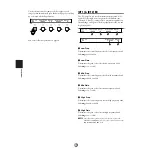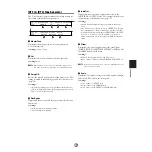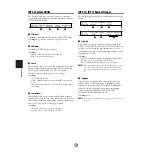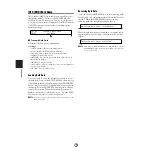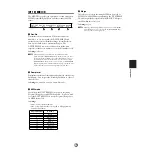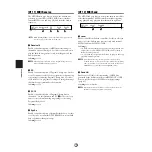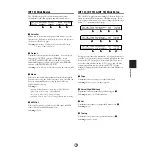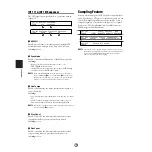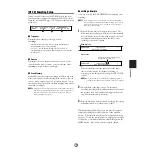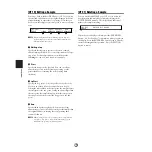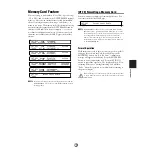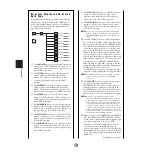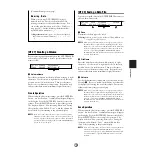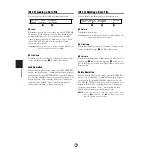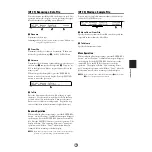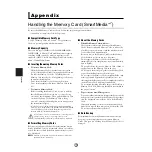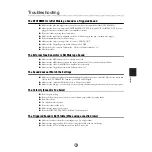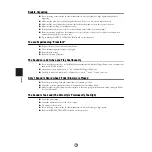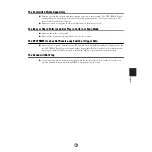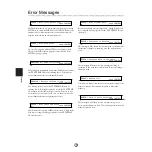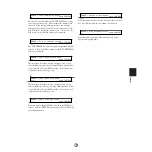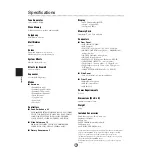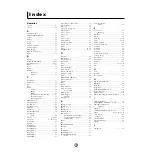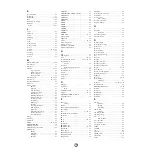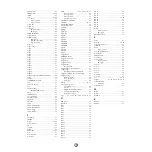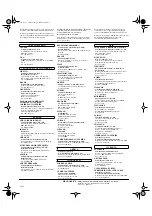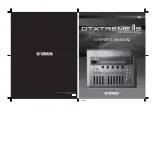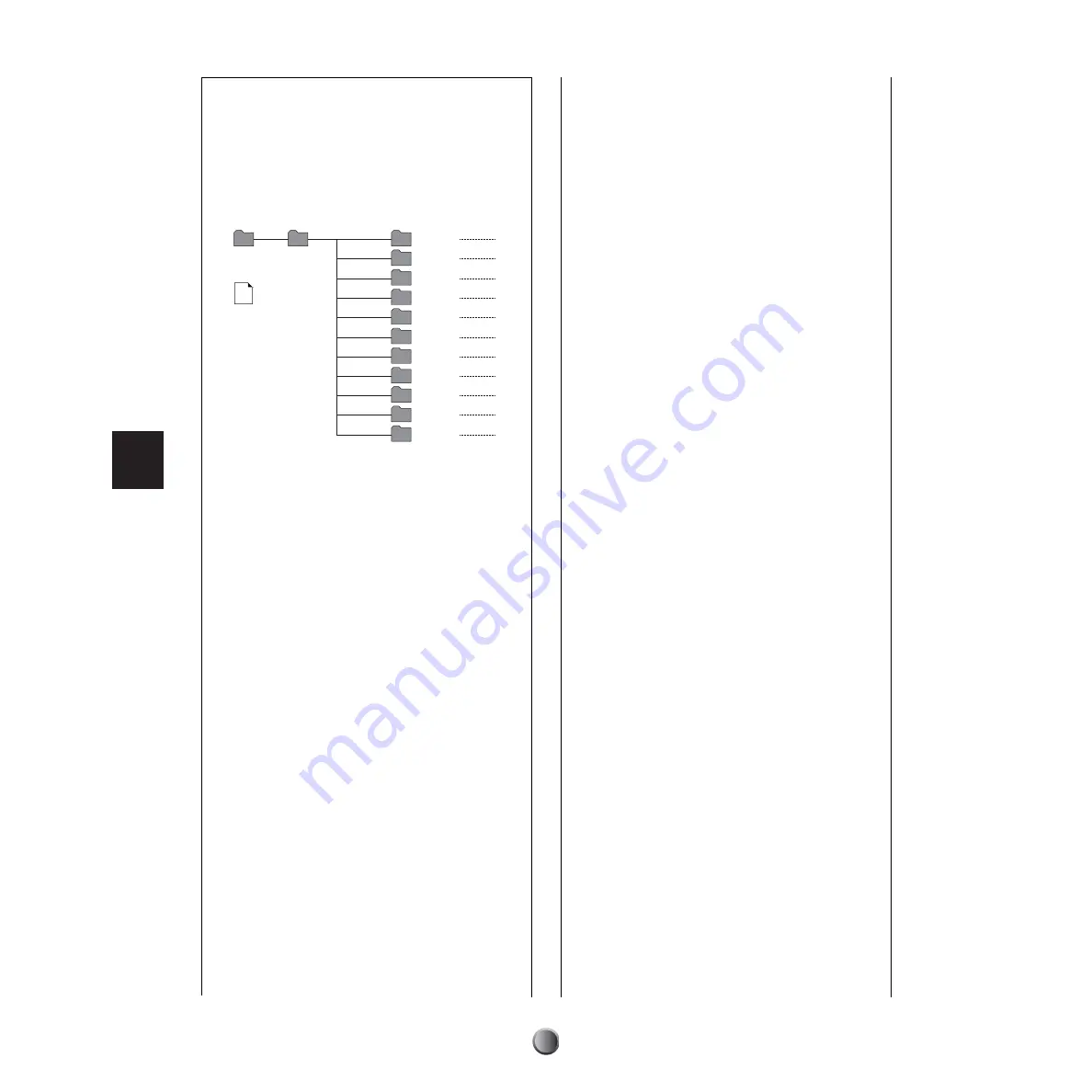
Utility Features
86
D i r e c t o r y S t r u c t u r e a n d S t o r e d
D a t a T y p e
A properly formatted memory card has the following
directory tree. Each operation in the CARD pages
(read, write, rename, delete, and so on) is performed
to a specific directory in the tree, depending on the
type of data that is selected.
1
The
ALLDATA
directory stores a file that contains all
setting data for DTXTREME IIs. This directory is
used when you select all data for the target data type
in each CARD operation.
2
The
SYSTEM
directory stores a file that contains
settings available in SYSTEM pages in utility
features. This directory is used when you select
system for the target data type in each CARD
operation.
3
The
ONEKIT
directory stores a file that contains
settings for the current drum kit (in the working
buffer). This directory is used when you select one
kit for the target data type in each CARD operation.
4
The
ALLKIT
directory stores a file that contains
settings for all User kits (U1 to U40). This directory
is used when you select all kit for the target data type
in each CARD operation.
5
The
ONECHAIN
directory stores a file that contains
settings for the current chain (in the working buffer).
This directory is used when you select oneChain for
the target data type in each CARD operation.
6
The
ALLCHAIN
directory stores a file that contains
settings for all chains (1 to 32). This directory is used
when you select allChain for the target data type in
each CARD operation.
7
The
ONESONG
directory stores a file that contains
settings for the current User song. This directory is
used when you select oneSong for the target data type
in each CARD operation.
8
The
ALLSONG
directory stores a file that contains
settings for all User songs (U1 to U32). This
directory is used when you select all song for the
target data type in each CARD operation.
9
The
ALLVOICE
directory stores a file that contains
settings for all user voices. This directory is used
when you select allVoice for the target data type in
each CARD operation.
n
User voices are created using external System Exclusive
parameter change data. Since they cannot be created on
the DTXTREME IIs itself, you will not normally select
allVoice.
)
The AUTOLOAD directory is used to load sample
files. If you store an AIFF or WAV audio file in this
directory on the computer, the DTXTREME IIs will
automatically load that file when it is turned on. You
can use the auto-loaded sample as an original drum
voice. For your information, an auto-loaded sample
must have an eight-character name beginning with a
two-digit number (01 to 99), followed by a character
that specifies which slider can control the volume level
of that audio file (drum voice). The character must be
C, H, K, M, S or T—CYMBAL, HI-HAT, KICK,
MISC, SNARE or TOM. Plus, you need to end the
name with a three-character extension. Names such as
“01SFAT.AIF” (No.01 Fat Snare) or
“32CSWISH.WAV” (No.32 Swish Cymbal) enable to
control the sample volume with an appropriate slider.
n
The AUTOLOAD directory is used only in association
with a computer. You cannot use it with CARD
operations.
!
The
VOLUME
directory is a parent directory used to
store a waveform sample captured on the
DTXTREME IIs. If you create a volume (page 87),
it will be created as a subdirectory contained in the
VOLUME directory. You can use this subdirectory to
store your captured samples, and specify it as wave
directory (page 47) for your custom drum kit samples.
n
You can use your computer to make a volume
(subdirectory) inside the VOLUME directory. Once you
make a volume, it can also be used to store all necessary
files — drum kits, songs, chains, waveform samples, and
even AIFF or WAV audio files created on the computer —
for specific situations, such as recording sessions or live
performances, for which you want to load all necessary files
with a single CARD operation. You need a computer to
transfer the necessary files to the subdirectory (they cannot
be transferred using the CARD operation).
@
When you want to play an
SMF
(Standard MIDI File
Type 0) MIDI file on the DTXTREME IIs, specify
its name with a eight-character name beginning with
a two-digit number (01 to 99) plus a “.MID”
extension (i.e., MYSONG.MID) and put it in the
root directory (where the YAMAHA directory
resides) of the memory card. You can select and play
the MIDI file when you specify a song from the card
(C1 to C99) with the appropriate card inserted in the
CARD slot.
(Continued to next page)
YAMAHA
XXXX.MID
SMF
DTXTREME
ALLDATA
1
SYSTEM
2
ONEKIT
3
@
ALLKIT
4
ONECHAIN
5
ALLCHAIN
6
ONESONG
7
ALLSONG
8
ALLVOICE
9
AUTOLOAD
)
VOLUME
!



